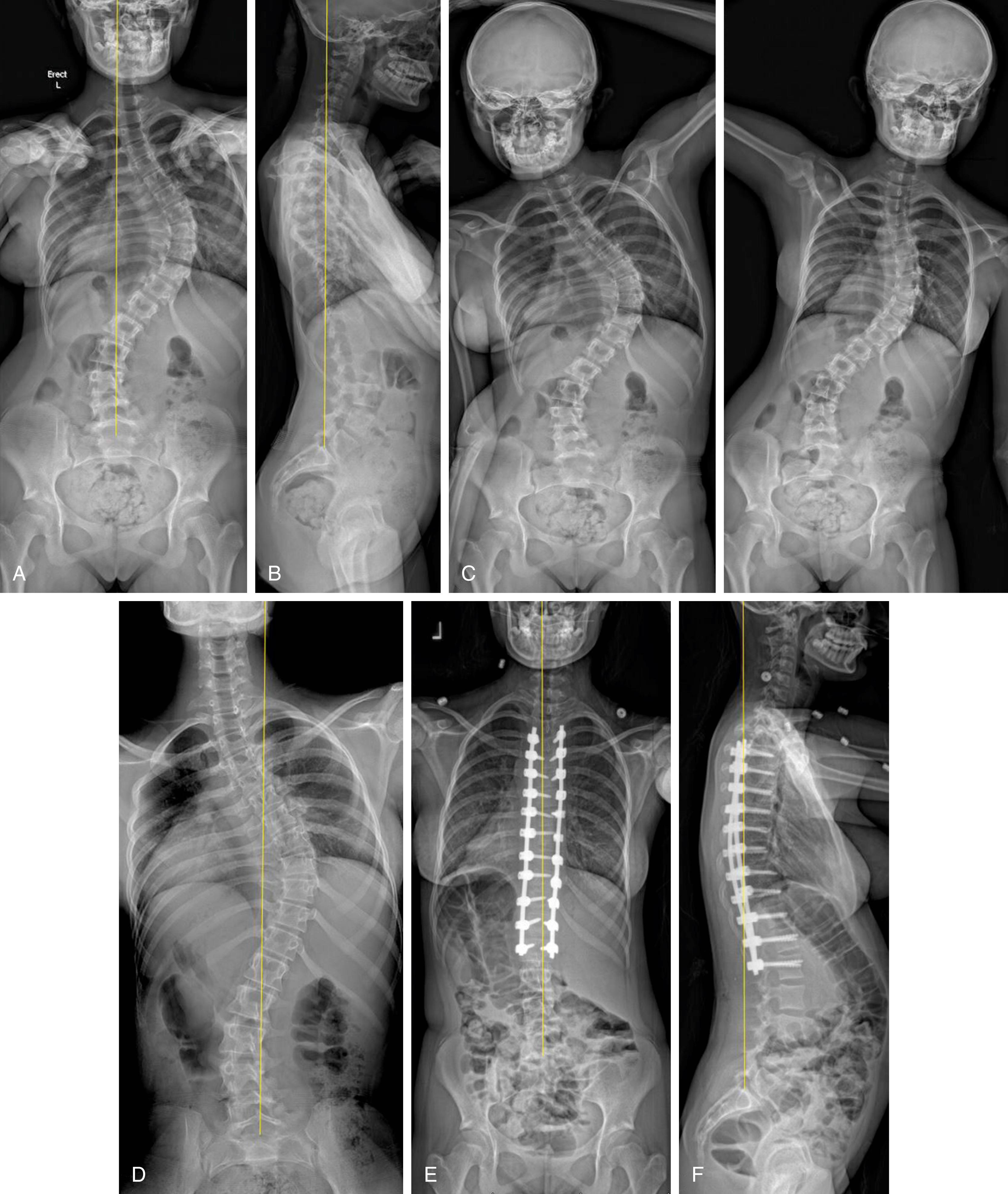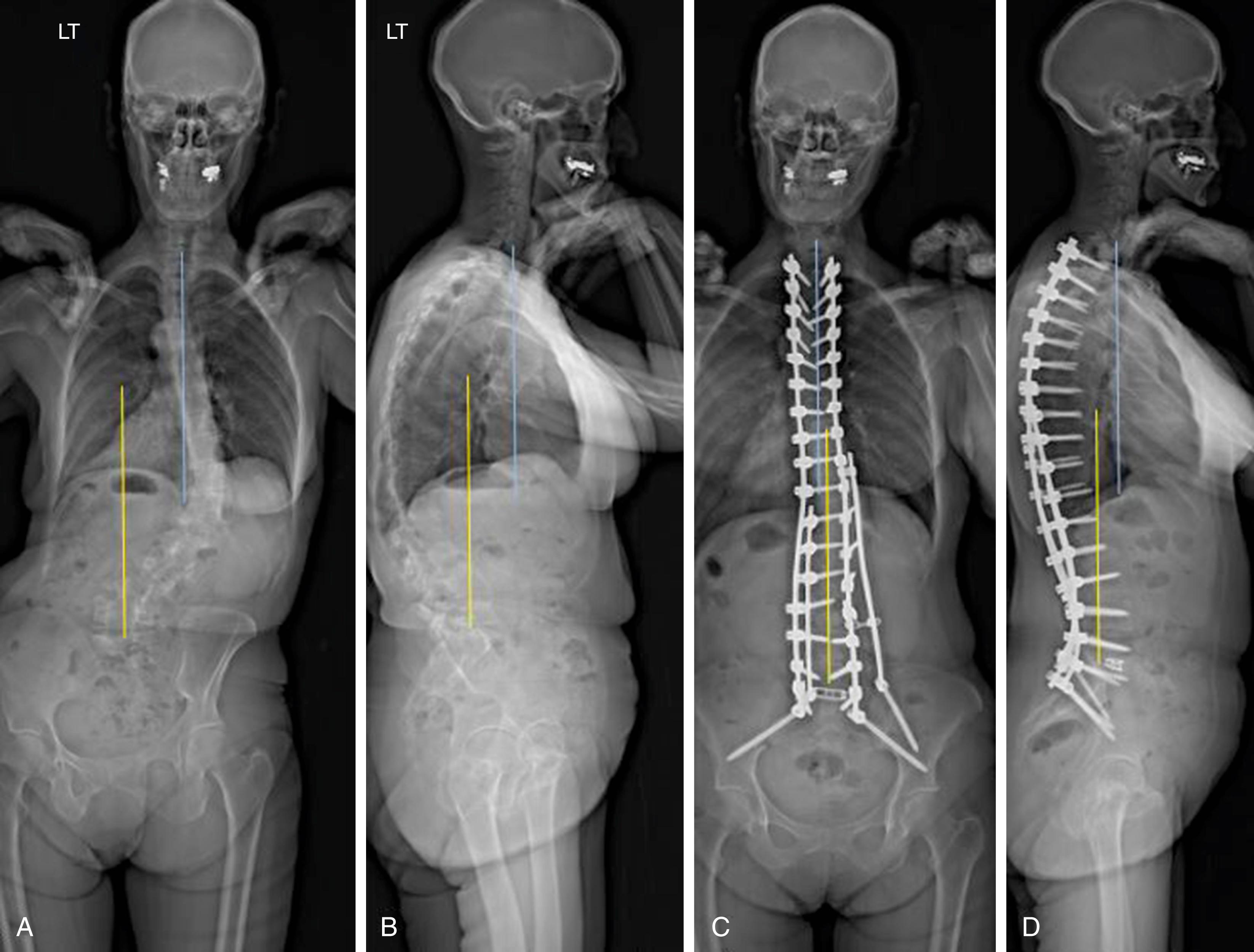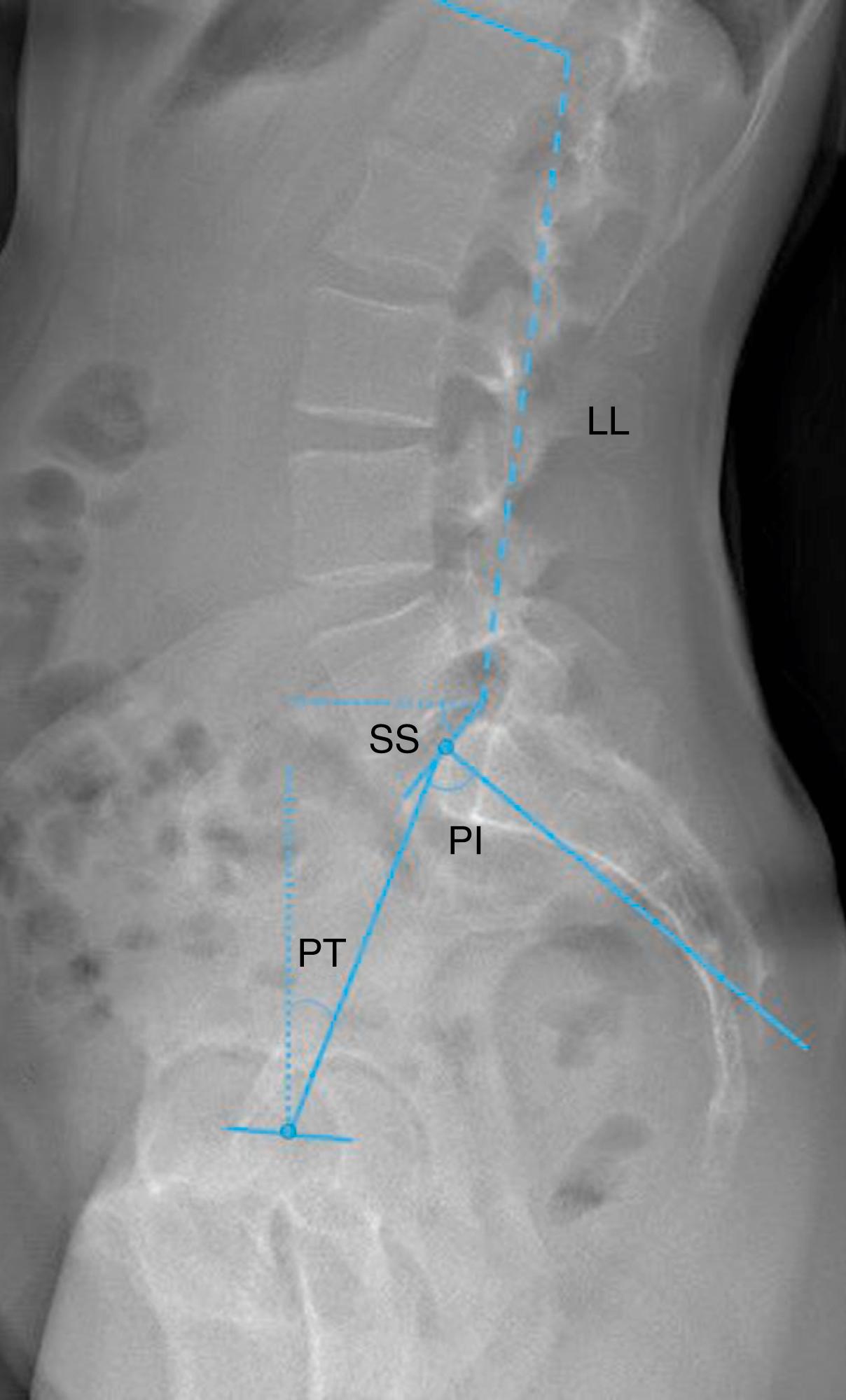Physical Address
304 North Cardinal St.
Dorchester Center, MA 02124
Spinal deformity has many different causes and affects patients of all ages. Depending on the patient’s symptomatology and magnitude of deformity, surgical intervention may be necessary.
Iatrogenic spinal deformities, such as lumbar flatback syndrome and proximal junctional kyphosis, are increasingly common causes of adult spinal deformity.
Preoperative patient selection and identification and reduction of risk factors for perioperative complications are paramount before planning a long-segment spinal surgery.
Understanding spinal balance and key radiographic parameters is critical to carrying out preoperative surgical planning and reducing the incidence of iatrogenic spinal deformity.
Spinal deformity correction and improved spinal balance can alleviate pain and have been shown to enhance functional outcomes.
Spinal deformity can affect the spine in three dimensions––in the coronal, sagittal, and axial planes. Spinal deformity can occur in patients of all ages, from birth through adulthood. Depending on the age at presentation and the degree of deformity, treatment can vary greatly. Younger patients are often treated for cosmetic concerns, risk of curve progression, or back pain––neurological compromise is not as common in this population. Adult patients, on the other hand, will often present with symptomatic deformity, including back pain and neurologic symptoms. The purpose of this chapter is to provide an overview of the surgical management of spinal deformity, including preoperative planning and operative approaches to care.
Treatment for spinal deformity began centuries ago; Hippocrates initially described the application of axial traction on the “Hippocratic board” to correct scoliotic and kyphotic deformities. Since then, techniques for scoliosis correction remained relatively unchanged until Paul Harrington described the surgical implantation of metal rods to correct deformities in the 1960s. The Harrington rod system revolutionized the treatment of spinal deformity and led to a subsequent rapid development in technology. In the early years of instrumented spinal fusion, the main priority was the coronal plane. Over several decades, however, it was discovered that a purely coronal plane correction (without correcting sagittal balance) led to significant patient morbidity over time, known as a flatback deformity. To correct the spine in all three planes, stouter fixation into each individual vertebra was needed. This led to the development of sublaminar wires, hooks, and eventually pedicle screws to obtain significant control of each segmental level and to allow for major deformity correction in all three dimensions. In combination with various osteotomy techniques discussed here, the use of pedicle screw fixation is the foundation of present-day spinal deformity surgery.
Spinal deformity surgery is a major procedure that is not without risk. When considering patients for a spinal deformity surgery, one must consider the patient’s health, symptomatology, imaging, goals, and expectations. The overall aims of surgery are to halt curve progression, relieve pain, improve cosmesis, and restore function. In this section we review these concepts and various tools one may use to determine the appropriate procedure for the appropriate patient. In-depth discussion with the patient, a detailed physical examination, and a thorough analysis of imaging to develop a thoughtful preoperative plan are key first steps in a successful spinal deformity surgery.
The prevalence of adult spinal deformity (ASD) is estimated to occur in 60% of individuals over the age of 60 years. Surgical intervention has proven itself to be a powerful tool in treating ASD––one study showed that patients who received surgery for ASD versus those that did not had a significant improvement in health-related quality of life (HRQoL) scores. However, the rate of complications for these types of procedures has been reported to be between 13.8% and 41%. Additionally, given the magnitude of the surgery and the stress on the patient overall, it has been estimated that 26.8% of patients have at least one medical complication (unrelated to the surgery itself) following surgery. , As such, recognizing risk factors and selecting the appropriate patient preoperatively is a critical step, both for risk stratification as well as to empower patients to adjust modifiable risk factors. Various risk factors, including hypertension, smoking, heart disease, perioperative anemia, obesity, depression, female sex, and duration of symptoms (related to the spine), have been found to influence postoperative complication rates. ,
Perioperative complications (within 3 months following surgical date) must also be considered. These include complications that occur intraoperatively (such as dural tears) and postoperatively (such as persistent neurological deficit or wound infection). Neurological complications are not unexpected following major spinal deformity surgery––especially in degenerative scoliosis patients, where there may be chronic impingement, or in revision cases with significant scar, as the dura becomes attenuated. Cases where osteotomies are required have significantly higher rates of complication as well, inherent to the procedure itself. The approach used also places certain nerves at higher risk, such as in the anterior approach (lumbar sympathetic trunk) or lateral approach (subcostal, iliohypogastric, ilioinguinal). ,
Decreasing complications is a constant goal of research in spinal deformity. As mentioned earlier, understanding preoperative risk factors allows for the identification of modifiable risk factors that may be optimized before surgery by a multifaceted team, including the spine surgeon, the patient, the patient’s primary care physician, and other specialists. As previously discussed, hypertension, smoking, heart disease, perioperative anemia, obesity, and depression are all important risk factors that have been identified. Surgical methodology is also being examined for areas of improvement. Areas of interest currently being studied include two-attending surgeries and staged surgeries. Two attending surgeries have been proposed to reduce complication rates by reducing intraoperative error and increasing intraoperative efficiency. With two experienced attending surgeons operating, it is theorized that improved workflow and anticipation may reduce intraoperative complications, although further study is required in this field. Another consideration to reduce complication rates is to stage complex procedures. Dividing surgeries into smaller procedures allows the patient to recover from the trauma of the surgery itself, and also reduces surgical team fatigue; however this also requires further study.
A unique set of terms may be applied to spinal deformity and should be reviewed briefly. Spinal deformity involves a curvature in either the coronal or sagittal plane. Curves in either plane are measured from the superior end plate of the cephalad vertebra to the inferior end plate of the caudal vertebra. The end vertebrae are the most tilted vertebra on the cephalad and caudal ends of the curve. Lines extended along the end plates of the vertebral bodies that are part of the curve in question all converge toward a central point within the concavity of a curve. Lines extended along the end plates of vertebral bodies not involved become divergent. The most cephalad or caudal vertebral body visualized is the end vertebra. The neutral vertebra is that vertebra between curves that demonstrates the least rotation. Both pedicles of the neutral vertebra should be relatively symmetrical on the anteroposterior radiograph. The stable vertebra is the vertebra that is most bisected by the center sacral vertical line (CSVL). This line is determined by first drawing a line connecting the most rostral point on each of the iliac crests, then drawing a perpendicular line from the midpoint of the S1 vertebra superiorly.
Understanding imaging is critical in developing a preoperative surgical plan. There are various radiographic parameters that are used to determine balance, both in the coronal and sagittal plane. Various studies have looked at normal anatomic alignment and how changes in these parameters can correlate with patient outcomes. By defining these measurements in various settings (adolescent idiopathic scoliosis, degenerative scoliosis), treatment can vary significantly. Whether it be fusion level selection in the adolescent patient or the requirement for osteotomies in the adult degenerative patient, understanding radiographic parameters is critical to being a competent spinal surgeon.
In the early years of instrumented spinal fusion, correction of coronal deformity was the main priority. One of the most fundamental measurements in the coronal plane is the Cobb angle, which defines the degree of scoliotic deformity. Observing the change in Cobb angle on radiographs with various maneuvers (bending, supine, traction) gives the surgeon additional information regarding curve flexibility and may potentially indicate the need for osteotomies ( Fig. 141.1 ). Curves that are not as flexible are described as structural (>25 degrees on side-bending radiographs), whereas nonstructural or compensatory curves may self-resolve once the structural curve is corrected. This becomes important in level selection, specifically in the adolescent idiopathic scoliosis population.

Coronal imbalance is another important measurement that is defined as the distance between the CSVL to the C7 plumb line (a vertical line drawn from the midpoint of the C7 vertebral body) on a posteroanterior standing radiograph ( Fig. 141.2 ). Clinically, this presents as a trunk shift. Trunk shift is not only cosmetically displeasing but can also interfere with ambulation, owing to the shift in weight. Although much of the focus has shifted to sagittal balance in recent years, coronal imbalance has also been shown to have a significant role in patient outcomes.

Various measurements have been described to understand the nature of sagittal balance of the human spine. Firstly, one can measure the amount of cervical lordosis, thoracic kyphosis, and lumbar lordosis (LL) present on the sagittal radiograph. In degenerative processes, a change in one of these measurements can lead to compensatory changes in other parts of the spine, as well as in the pelvis. To understand global sagittal alignment throughout the entire spine, the sagittal vertical axis (SVA) was defined. The SVA is the distance between the C7 plumb line (a vertical line drawn from the center of the C7 vertebral body) and the posterior sacral vertical line (a vertical line drawn for the posterosuperior corner of the S1 end plate) (see Fig. 141.2 ). It has been well documented that, the larger the difference between these two vertical lines, the worse patients score on their HRQoL assessment ; an SVA greater than 5.0 cm has been associated with worse outcome scores, with a normal population falling between 0 and 6.4 cm.
The pelvis and spine also have a complex relationship that has been described using several key measurements. Pelvic tilt (PT) is described as the angle formed by a line from the midpoint of the S1 end plate to the femoral head and a vertical reference line. Sacral slope (SS) is described as the angle between a line along the S1 end plate and a horizontal reference line. The sum of these two lines define pelvic incidence (PI), which remains constant (whereas PT and SS may change with patient position). PI is defined by a line perpendicular to the end plate of S1 at its midpoint and a line from this midpoint to the bicoxofemoral axis, illustrating the relationship of the pelvis to the center between the femoral heads ( Fig. 141.3 ). PI is thought to serve as the major contributor to lordosis in the lumbar spine, with high numbers leading to isthmic spondylolisthesis and degenerative disease. Studies in an asymptomatic adult population have shown normal SS to range from 36 to 39 degrees, PT to range from 13 to 16 degrees, and PI to range from 51 to 53 degrees. One of the most studied relationships in the sagittal plane is the PI-LL mismatch, which has consistently been related to patient HRQoL outcomes (worse scores with PI-LL mismatch >10 degrees). ,

Become a Clinical Tree membership for Full access and enjoy Unlimited articles
If you are a member. Log in here